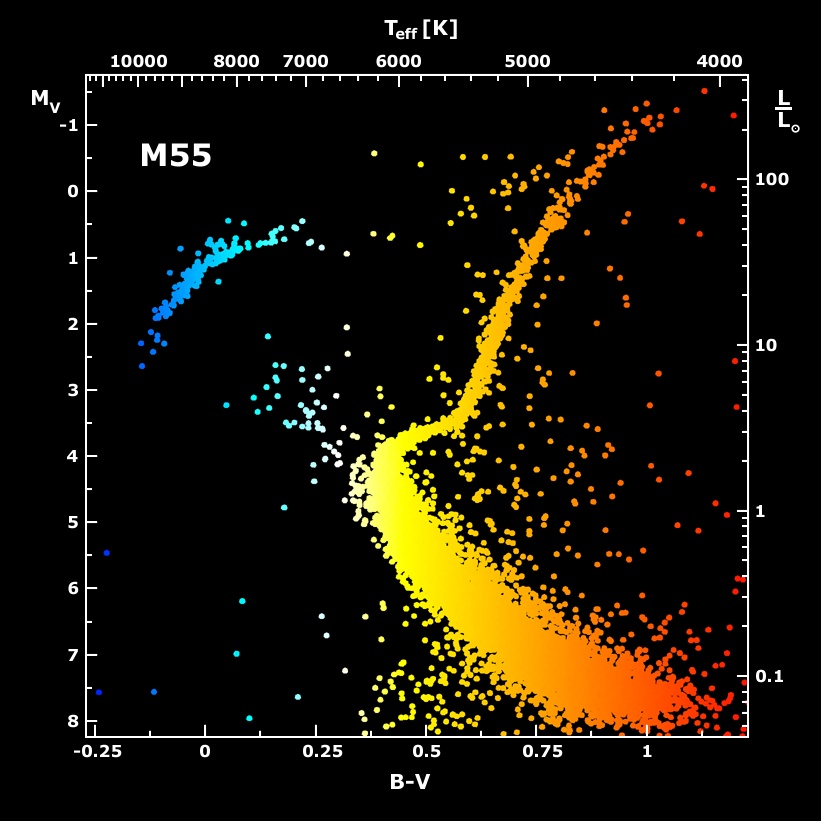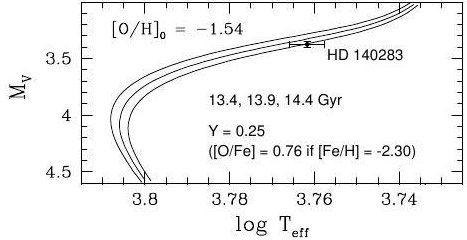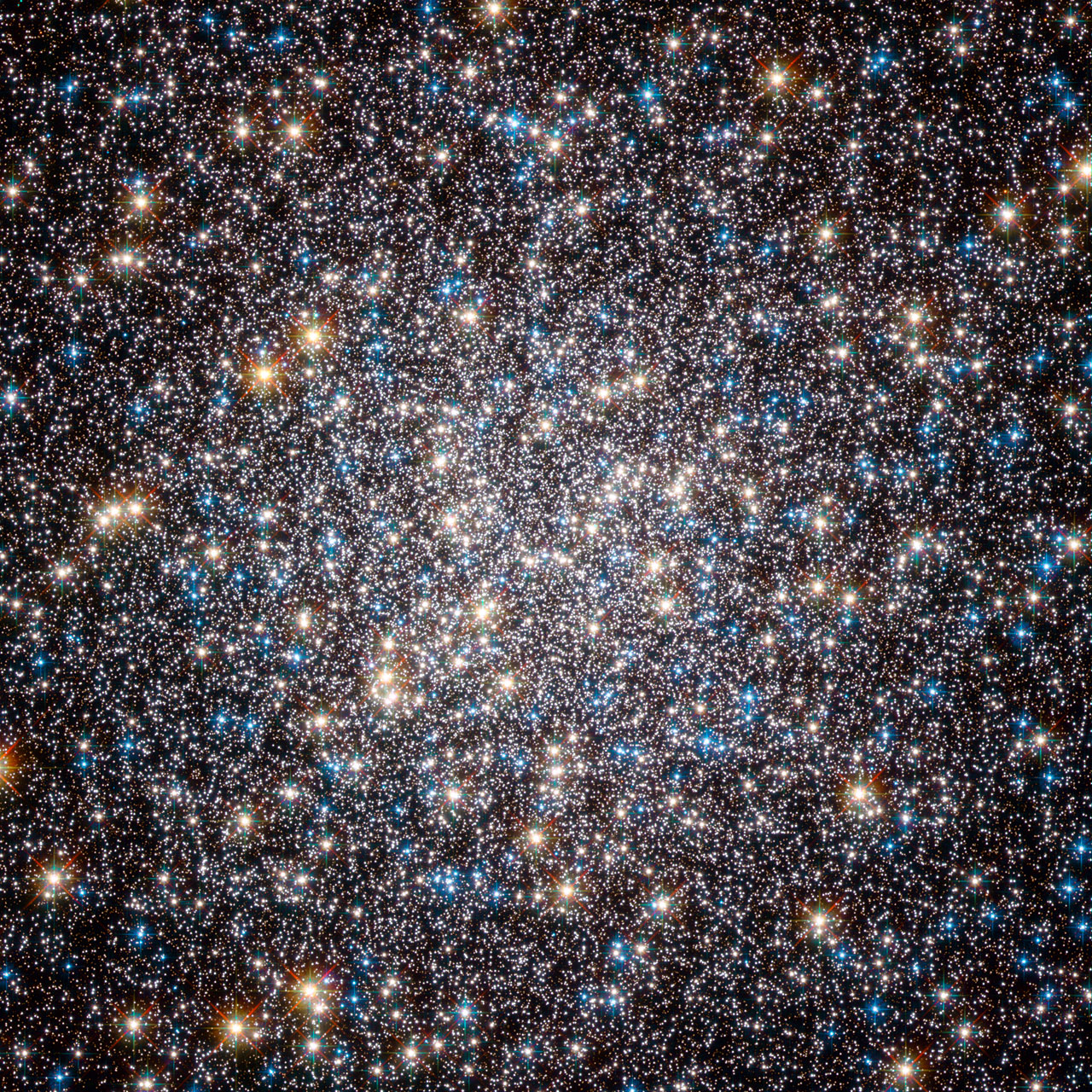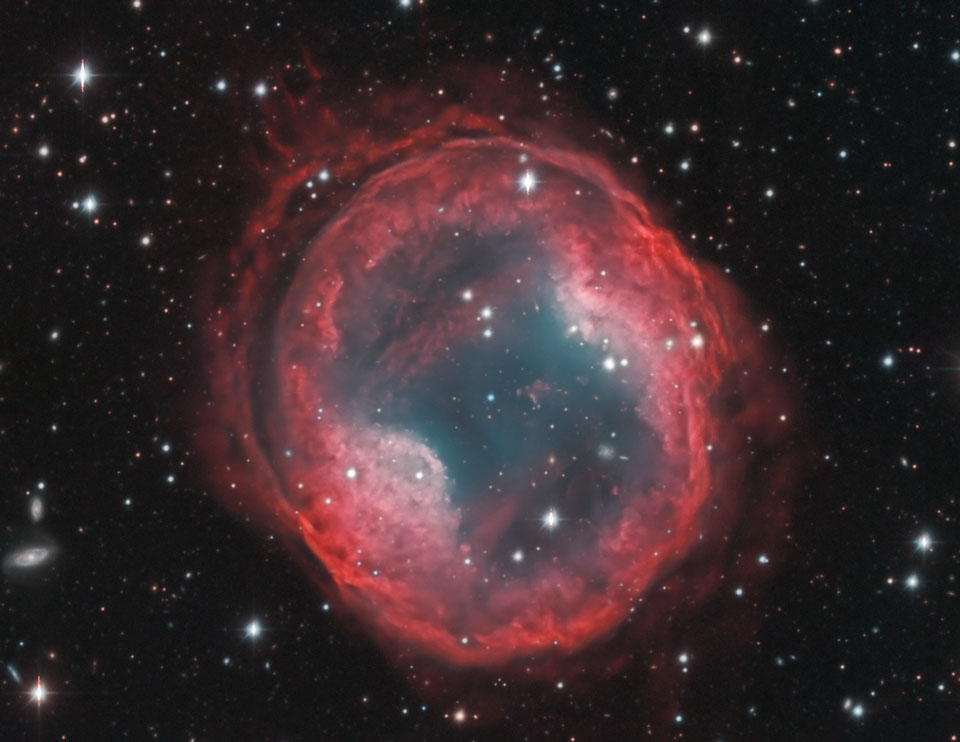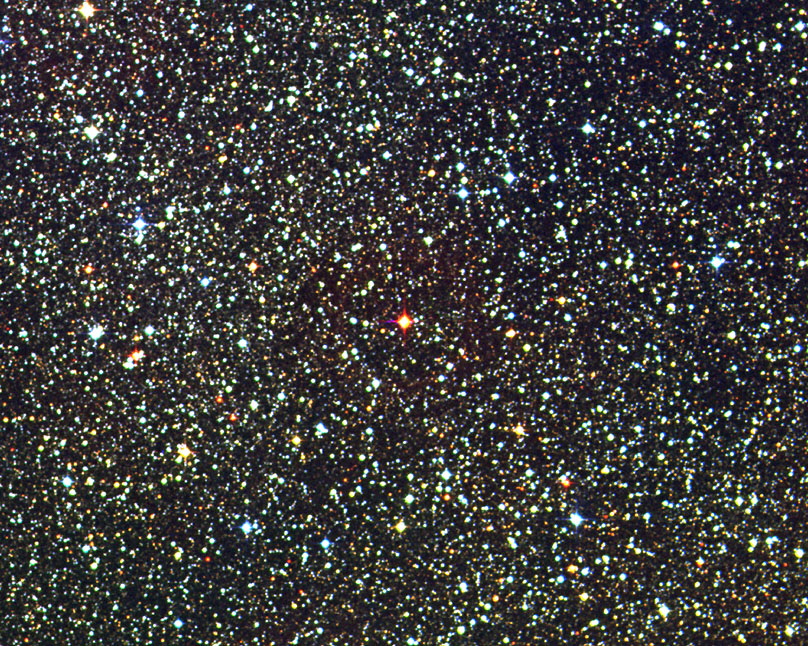Bluish star is as old as the universe?
Posted: Sat Feb 23, 2013 5:28 pm
A nearby star, HD 140283, is both older, brighter and bluer than the Sun. And not only is it older, it is as old as the universe!
HD 140283 is a subgiant of spectral class F3, hotter than the Sun, with a Johnson B-V index of +0.484 ± 0.010, bluer than the Sun. The apparent luminosity of HD 140283 is +7.20, which, coupled with its well-measured distance of 190 light-years, means that its absolute V luminosity is 3.72 ± 0.30 that of the Sun. Amazingly, HD 140283 is incredibly metal-poor. In other words, it appears to be made of the kind of the almost perfect mixture of hydrogen and helium that came directly from the Big Bang, with just the tiniest seasoning of other elements in the brew.
Now Howard E. Bond, Edmund P. Nelan, Don A. VandenBerg, Gail H. Schaefer and Dianne Harmer claim in an article that the luminosity and chemical composition of HD 140283 means that its age is 14.46 ± 0.31 billion years. In view of the fact that the universe itself is believed to be only 13.77 billion years old, HD 140283 can't really be celebrating its 14.46th billionth birthday any time soon. But, say the authors of the article about HD 140283, the uncertainty about the star's age is really 0.8 billion years, which means that HD 140283 is not too old for the universe it inhabits if it was born right on the heels of the Big Bang.
To me it is absolutely amazing that a star that has been around for as long as the universe can be bluish in color, or at least bluer than the Sun. Normally stars get redder as they age. Really the oldest star in the universe ought to have been a tiny red dwarf, don't you think so?
The explanation for the color and brightness of HD 140283 must be that it is a blue horizontal branch star, the kind of star that is always old and very metal-poor. In the diagram of the stellar content of globular cluster M55, you can see the location of the blue horizontal stars at upper left. HD 140283 must be a member of the blue horizontal crowd!
Read about HD 140283 here, where you can also see a picture of the star.
Ann
HD 140283 is a subgiant of spectral class F3, hotter than the Sun, with a Johnson B-V index of +0.484 ± 0.010, bluer than the Sun. The apparent luminosity of HD 140283 is +7.20, which, coupled with its well-measured distance of 190 light-years, means that its absolute V luminosity is 3.72 ± 0.30 that of the Sun. Amazingly, HD 140283 is incredibly metal-poor. In other words, it appears to be made of the kind of the almost perfect mixture of hydrogen and helium that came directly from the Big Bang, with just the tiniest seasoning of other elements in the brew.
Now Howard E. Bond, Edmund P. Nelan, Don A. VandenBerg, Gail H. Schaefer and Dianne Harmer claim in an article that the luminosity and chemical composition of HD 140283 means that its age is 14.46 ± 0.31 billion years. In view of the fact that the universe itself is believed to be only 13.77 billion years old, HD 140283 can't really be celebrating its 14.46th billionth birthday any time soon. But, say the authors of the article about HD 140283, the uncertainty about the star's age is really 0.8 billion years, which means that HD 140283 is not too old for the universe it inhabits if it was born right on the heels of the Big Bang.
M55. Photo: B.J. Mochejska, J. Kaluzny
The explanation for the color and brightness of HD 140283 must be that it is a blue horizontal branch star, the kind of star that is always old and very metal-poor. In the diagram of the stellar content of globular cluster M55, you can see the location of the blue horizontal stars at upper left. HD 140283 must be a member of the blue horizontal crowd!
Read about HD 140283 here, where you can also see a picture of the star.
Ann
